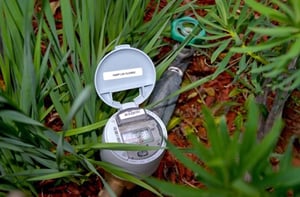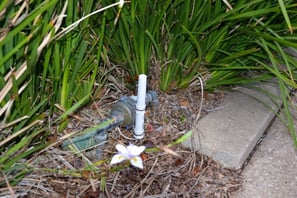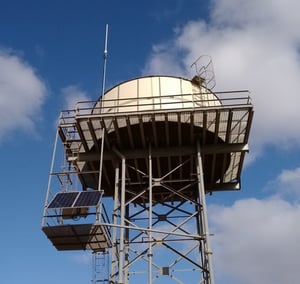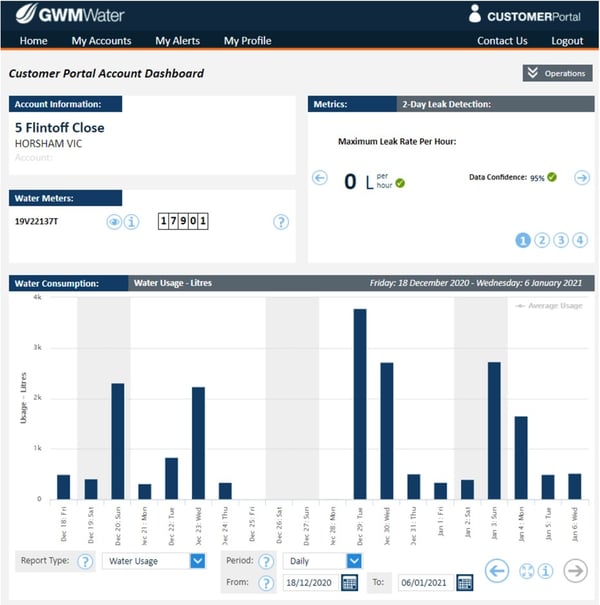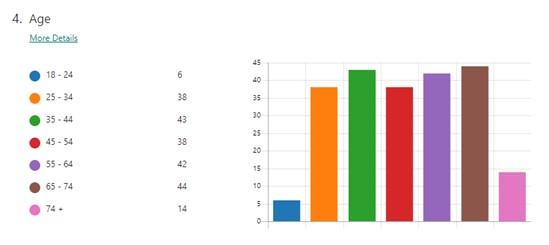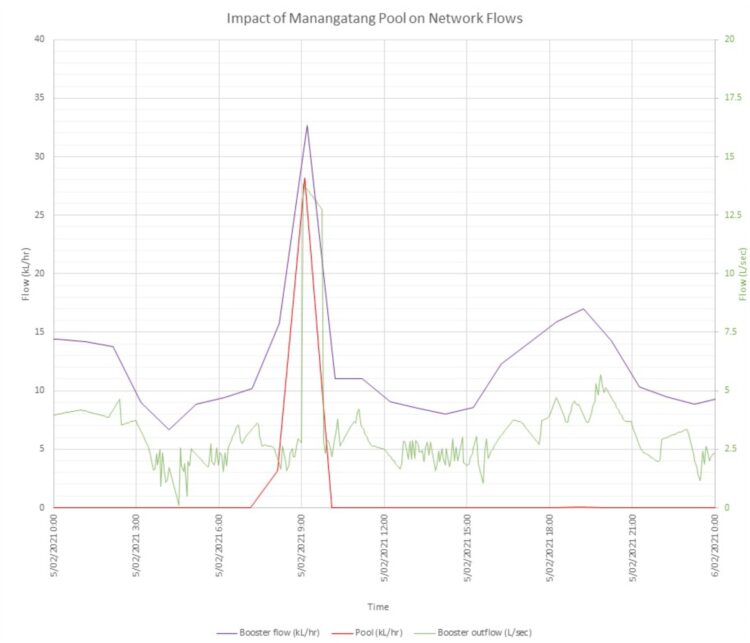Digital metering hands control to customers
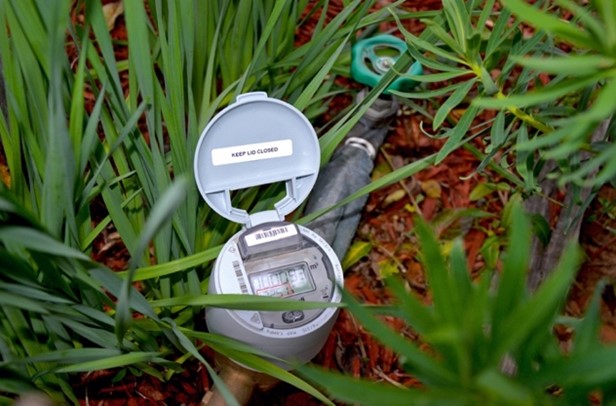
B Nitschke, A Rohde.
First published in Water e-Journal Vol 6 No 1 2021.
Abstract
GWMWater’s urban water customers can now better track their water usage on their phone, computer or any other electronic device following the completion of an Urban Remote Metering project in December 2020.
Internet of Things (IoT) communication technology has been used to connect the 29,000 communications-enabled, all-in-one water meters and 3000 retrofitted meters to a secure network. Using this technology GWMWater is empowering rural and urban customers with pseudo real-time data in a Customer Portal so they can better understand their water use and adjust their habits where required.
The Customer Portal allows residential and commercial customers to see water usage at properties or points of service where there is a meter installed under one login. On various devices, they can view their historical water use and any water use patterns, reduce unnecessary water use/expense, and set up automatic SMS message alerts to notify them of high usage or potential leaks.
As well as providing enhanced service to its urban and rural customers, the technology is improving the efficiency in metering and associated operations as well as minimising the extent of leakage and unexplained water loss.
Introduction
GWMWater is the first Victorian water corporation to launch a Customer Portal which enhances customer experience by sharing pseudo real-time water usage data with urban customers, following a successful pilot.
In 2016, GWMWater deployed a digital metering solution and customer portal to its 14,000 rural customers. An extension of this original digital metering solution for urban customers commenced in 2019 and was finalised in December 2020.
Australian water utility organisations have identified the potential of the Internet of Things (IoT) as a low-cost communications technology that will improve electronic oversight of their facilities and networks, as well as delivering real customer benefits (Pordage, 2020). Several trials or deployments have been undertaken or are in the process of being undertaken across the Australian water industry for digital metering (L Roberts, 2020).
Furthermore, customer expectations are changing – demanding real-time consumption information to manage their water use and ensure a greater understanding of how to better utilise this precious resource.
The project aimed to improve services to customers by:
- Eliminating manual meter reads and, as a result, reducing overheads, streamlining billing processes and reducing carbon emissions caused by travel.
- Reducing water loss by establishing end-to-end water use trace.
- Improving GWMWater’s understanding of water consumption trends, as well as the performance of water assets and infrastructure to assist with forward planning.
- Upgrading and standardising GWMWater’s meter fleet.
- Reducing Occupational Health and Safety risks associated with travel to read meters across 60,000 square kilometres.
- Empowering customers with information that will enable them to identify water use and usage patterns, and make changes as they see fit.
- Improving customer experience by enabling customers to set up leak alerts using consumer defined predetermined tolerance levels, to identify potential leaks beyond the customer meter.
Method
GWMWater used Internet of Things (IoT) technology to replace 29,000 water meters with an all-in-one device and to retrofit 3000 meters with an electronic device across GWMWater’s urban operational area. The meters are low-cost electronic devices which use a Low Power Wide Area Network (LPWAN) as the communication medium.
The deployment of the all-in-one meter is a game-changer for this type of application. The previous method was to retrofit an electronic device to an existing water meter. While the retrofit method works as expected, there is the possibility (although slim chance) of having the electronic device and meter being out of sync. There is also a greater possibility the retrofit meter is tampered with as it is a bolt-on solution. The all-in-one solution just looks like a normal meter. The devices are powered with a built-in battery which is expected to last up to 15 years and can be monitored remotely. They do not require any additional maintenance than a standard meter and because of the design of the meter, are less susceptible to frost.
Meter battery life was a key consideration in the investment decision. The unidirectional communications technology at the customer meter ensures the communication process does not produce undue overhead on the battery.
The GWMWater operational area covers some 62,000 square kilometres or 25 percent of Victoria – similar in area to Tasmania. GWMWater leveraged a communications network and back-end data handling capability developed for the Rural Pipeline Intelligence Project in 2016, adding an additional 43 receivers, to establish consistent LPWAN coverage across our operating area. The range of the receivers typically spans a five to 20-kilometre radius (depending on the terrain), and benefits from the relatively flat topography across the region.
The digital meters record consumption at regular intervals and transmit data at user defined frequencies (presently hourly) using a Low Power Wide Area Network (LPWAN). The consumption data is aggregated by the contractor and returned to GWMWater for operational purposes to support water use across the day and trending over longer timeframes. A census of the data is used to produce the monthly/quarterly bill, eliminating the need for manual meter reads. Consumption data is re-directed into the Customer Portal, empowering the customer with more information about their water service than ever before.
GWMWater originally launched the Portal for rural customers in 2016. Since then, the corporation has made improvements based on feedback and to add value for urban customers. New features to the system have streamlined the sign-up process using a two-factor authentication process, added water usage pricing and enabled nickname functionality.
The Customer Portal allows both residential and commercial customers who are responsible for paying the usage component of the property’s water bill, to see all of their water accounts under one login, monitor water use, set alerts for high usage, identify leaks and track spending.
The customer portal is supported on various electronic devices including personal computer, mobile and tablet. Customers can view their historical water use and any water use patterns, reduce unnecessary water use/expense, and set up automatic SMS message alerts to notify them of high usage or potential leaks.
Potential leaks are identified if water is continuously running over a 48-hour period. Because, typically, customers don't use water all day every day, the Customer Portal expects the flow to stop going through the meter at some point during each 48-hour period. If it doesn't, and the flow is continuous, an alert maybe triggered.
The customer themselves sets their own threshold for what they consider high usage to trigger an email warning or text message alert. GWMWater encourages customers to look at their average daily and weekly consumption to determine their threshold, which can be set in either volume (litres or kilolitres) or cost ($). The thresholds can be amended at any time if they are triggering notifications too often or not enough.
The new two-factor authentication feature eliminates the need for customers to complete a two-step process to:
- Set up a Customer Portal login
- Add their accounts using a registration code
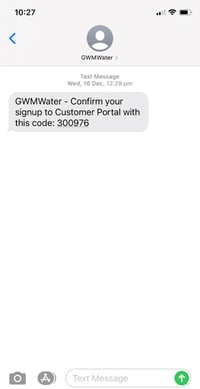 Figure 5: An example of the SMS message code sent to customers to verify their identity during the sign-up process.
Figure 5: An example of the SMS message code sent to customers to verify their identity during the sign-up process.
During the roll-out of the Rural Portal Customer Portal, this process confused some customers and resulted in a number of partial registrations and/or people aborting their effort to access the portal. The new process maps customer data from GWMWater’s backend systems to issue an email directly to the customer, who simply has to activate their account by creating a password and then verify their identity using a code sent to them by SMS message. Each water account owned by that customer in GWMWater’s system will automatically be displayed.
Establishing the two-factor authentication functionality required collating, manipulating, cleansing and sorting GWMWater’s complex and historical customer data into a useable and accessible format for migration into the Customer Portal. The work done in preparing the data streamlined the sign-up process for customers, ensured customer privacy with a two-step verification process, automated synchronisation of data between the portal and GWMWater, and ensured the integrity and accuracy of the data in the portal.
A phased roll-out was implemented to ensure GWMWater’s resources and capability matched the anticipated demand. The first phase was a Pilot program where 200 ‘early adopters’ were recruited to provide feedback on the sign-up process and functionality of the Portal. This allowed customer communications and resources to be refined, and on-boarding issues to be smoothed out before proceeding with the roll-out to the broader customer base.
Pilot results
GWMWater sought to achieve a cross-section of customers based on demographics and customer types to test the Portal. Of the 225 who registered for the pilot:
- 220 were eligible to participate in the pilot (i.e. were the account holder for the property and were responsible for the consumption part of the bill)
- 202 were owners, while 23 were tenants
- 218 were residential customers, while 7 were commercial/non-residential
- 12% had multiple properties they wanted to view consumption data for.
- Represented a relatively even spread of different ages, as per Figure 6, indicating that it wasn’t only younger people who were interested in signing up for the portal.
Participants were asked to provide feedback via two surveys. The first survey was issued two days after the initial activation email was sent. Of the 27% of participants who completed the survey:
- 98% reported the automatic sign-up process was easy to follow
- 43% used the support materials before or during the sign up process
- 2% required additional support from GWMWater to complete the sign-up process
- 12% needed to update their mobile phone number to verify their identity
- 25% had set up an automatic alert
The second survey was issued a week after the initial activation email. This survey focused on navigation and functionality of the Portal. Of the 27% of pilot participants who completed the survey:
- 80% had logged into the portal again since they completed the sign-up process
- 25% had set up a high water use or leak alert
- 30% had referred to support resources to set up alerts
- 15% had already received alerts
- 92% said they would recommend the GWMWater Customer Portal to a friend
At the completion of the pilot, 90% of those registered for the pilot had successfully signed up for the Portal. GWMWater used the learnings from the pilot to refine features and communication and support materials prior to the rollout to the broader customer base.
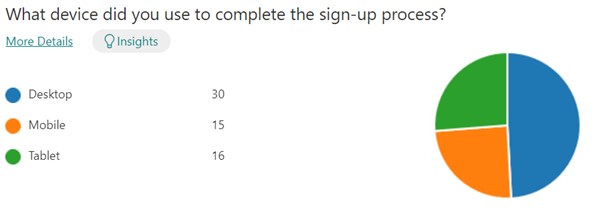 Figure 7: More than half of those who responded to the first survey indicated they completed the process on mobile or tablet.
Figure 7: More than half of those who responded to the first survey indicated they completed the process on mobile or tablet.
Other learnings
The install and commissioning of meters presented opportunities for improvement in similar projects. Firstly, GWMWater initially trialled the all-in-one digital meters in Horsham, largely due to the proximity to its corporate office as well as the base for the relevant contractor. However, during the rollout it was identified that the new digital meters, being dual-check, were impacting the flow rate for customers in smaller towns where the urban reticulation network had lower pressure than in Horsham, particularly during the warmer months and periods of high demand. This needed to be resolved as a separate project alongside the meter rollout.
Furthermore, GWMWater has reflected that enabling the install contractor with access to its Work Order System would have enabled more timely access to the meter data.
Organisational and industry benefits
Water is a precious resource. By using the collected water consumption data, GWMWater now has an end-to-end trace of water use within the GWMWater water network.
Digitising water meters enabled GWMWater to have an efficient collection and dissemination of water data, which has reduced operational costs for GWMWater and its customers. Digitising water meters has also enabled the ability to effectively track water within GWMWater’s major pipelines to enable more efficient water use and to also assist to reduce water losses.
For example, recently GWMWater engineers were able to use data from the digital meters to identify why customers were experiencing significant pressure drops during peak demand periods. Following some analysis, the data demonstrated that the 80mm meter at town’s local pool was consuming large volumes of water in a short timeframe, which resulted in a recommendation to reduce the orifice plate or replace the meter with a smaller option.
GWMWater was also able to identify and address a failed non-return valve at a Sewer Pump Station (SPS), reducing daily power consumption. The daily outflow measured at the SPS was compared to customer daily water usage in the sewer catchment area. Customer usage was less than the outflow at the SPS which indicated that more water was leaving the sewer catchment area than what was being supplied. This triggered an investigation at the SPS, which found a failed non-return valve was causing a portion of the waste water already evacuated from the SPS to return back into the SPS. With the non-return valve fixed the circulation of waste water ceased, reducing the previously pumped ~120 kL/day down to ~60 kL/day (reducing the pump runtime by ~35%).
The development of a vast communications LPWAN will enable a reduction in capital costs by utilising an existing low-cost communications network, a reduction in carbon emissions, and by reducing distances travelled by GWMWater operations and contractor staff, improved staff and contractor safety, as well as fatigue-related incidents due to travel.
The LPWAN is established across GWMWater’s operating footprint and has consistent network coverage. With the network now established, there is the opportunity to deploy other low-cost sensors (such as manhole detection, sewer overflow, tank level monitoring) across the LPWAN. The deployment of these sensors will provide GWMWater with efficient means to capture operational information.
This innovation can be transferred to other digital metering deployments or even to any IoT deployment, as this deployment has the same elements that are required for a general low power/low-cost technology initiative. The network is also open to industry to utilise. The LPWAN will provide another option for the industry.
The same principals will apply to deploy digital metering technology as would apply to deploy sewer level monitoring or water tank level monitoring. The communications network is the backbone to this initiative and with the network covering all of GWMWater’s operational footprint this has opened up further opportunities for innovation.
Overall, the project has:
- Improved GWMWater’s ability to respond to enquiries and complaints
- Provided GWMWater with increased data to more efficiently plan and operate its urban water distribution systems
- Reduced car-related energy use and greenhouse gas emissions
- Increased water availability through timely leak detection, optimised system operations
- Reduced network operational costs by avoiding the need to manually collect consumption data from urban customers
- Improved Occupational Health and Safety by reducing the need to travel vast distances and physically enter private properties to collect meter readings
- Improved business efficiency and better deployment and utilisation of specialist internal resources
- Provided detailed consumption and network data to better inform system planning and operations
The Portal also presents an opportunity to deliver segmented communication to customers such as whether the meter receives a potable or non-potable supply, and the current level of water restrictions (when in place) based on location.
Customer value
Water supply customers across Australia are becoming more and more conscious of their water consumption and their water usage trends. Using this technology GWMWater is empowering rural and urban customers with pseudo real-time data so they can better understand their water use and adjust their habits where required.
Studies have shown that digital metering has the potential to improve customer satisfaction significantly over a five-year period (Ian Robert Monks, 2021) however GWMWater has already documented some immediate benefits relayed from customers.
Rural customers with multiple meters across vast geographic areas have reported that the portal, and specifically the leak alerts, are an asset, saving them both time and money. Brian Barry, a farmer from Manangatang, reflected ‘My wife logs in to check every now and again, but the leak alert came through as a text message. The meter is placed in an obscure place so it was great to be alerted because if I didn’t see it, it would have continued for a long time. Usually I don’t have a lot of trust in new technology but it worked very, very well.’
Overwhelmingly, early adopters of the Urban Customer Portal cited the ability to monitor water use and costs (47%) as the most valuable feature. Some customers indicated that specifically, they appreciated being able to check how much water they used while using water for a specific purpose (i.e. to top up the pool). Thirty-one percent of early adopters indicated high usage and leak alerts were the most valuable feature.
Anecdotal feedback has also demonstrated customer value:
- It is great. I valued the energy portal that shows how much energy you are using, and the expected bill. Now I can have the same for water. It helps with planning and budgeting.
- Useful platform and easy to set up!
- It provides what is needed straight away, then gives you access to see further if wanted.
- Has been very helpful. Puts our minds at ease, particularly if there is a water leak, of which we have had two major ones under our house a few months ago.
For those less inclined to use an online portal to monitor water use, GWMWater has the capacity to identify potential leaks and proactively make contact with the customer by phone. Each potential leak is analysed based on customer type, water use purpose (if known), historical water use and any other factors which may explain continuous usage over a 48-hour period before contact is made.
Conclusion
The deployment of digital metering across GWMWater’s operational area has resulted in significant benefits to the organisation and customers and provides opportunities and learnings for other water corporations and organisations to use Internet of Things (IoT) technology to improve efficiency and customer experience.
Acknowledgements
The authors would like to acknowledge all GWMWater staff involved in the development and success of Urban Remote Metering Project and the Urban Customer Portal, with special mentions to Sally Marshall, Shane Schwarz, Brad Elliott, Kim Adams, Sujatha Umakanthan, Steve Briggs, James Clutterbuck and Holly Noonan for their leadership, support and contribution.
About the authors
Brendan Nitschke | Brendan Nitschke is the Manager Information and Communications Technology at GWMWater and has been implementing technology ‘things’ to achieve business outcomes, long before the IoT term become popular. In 2014, Brendan led the digital metering installation at GWMWater for rural meters and has followed this up with the recent installation for urban customers.
Adele Rohde | Adele Rohde is the Manager of Communications and Engagement at GWMWater. Adele supported the enhancements to the rural customer portal to improve the value proposition for urban customers and led the phased roll-out and on boarding of customers to the platform.
References
Ian Robert Monks, R. A. (2021). Towards understanding the anticipated customer. Urban Water Journal, 11-12.
L Roberts, J. S. (2020). Educating customers on water consumption. Water Source, https://watersource.awa.asn.au/community/engagement/educating-customers-on-water-consumption/.
Pordage, C. (2020, November 4). Digital water metering: the future of water management. Retrieved from Utility Magazine: https://utilitymagazine.com.au/digital-water-metering-the-future-of-water-management/

